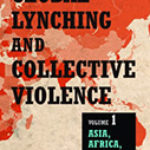Dangerous Spaces: Beyond The Racial Profile

Author: D. Marvin Jones
Publisher: Santa Barbara, CA: Praeger, 2016. 244p.
Reviewer: John Liederbach | March 2018
Recent U.S. news stories have featured a series of ignominious police-citizen encounters that have fueled anti-police sentiment and demonstrated the staying power of racial profiling as an important socio-political and legal concern. The controversy has thus far been debated primarily about whether police oppress and discriminate against individuals on the basis of race and/or ethnicity. Jones presents a different angle on the issue that is particularly important to policing scholars and law enforcement executives because his work challenges the legitimacy of the most recent innovations in patrol strategy.
Jones explains how the issue of race has become more complex and intersectional, wherein individual social identity involves color but also geographic space. People of color are vulnerable to discrimination by law enforcement based on their location within certain locales that Jones labels as “dangerous spaces.” The book is organized to describe these phenomenon as they are experienced by African-Americans within urban ghettos (chapters 2, 3 and 4), Mexican-Americans and other Latinos along the real and perceived southern border of the United States (chapters 5 and 6), and Muslims within any public space defined as vulnerable to acts of terrorism such as airports (chapters 7 and 8). Jones utilizes a variety of sources to demonstrate the “race as place” theme, including scholarship, personal narratives, historical accounts and fictional media.
The main line of argument is clear and it expands the usual dialogue: These groups experience discrimination because of race, but also because they live within places that have been defined as the front lines in the “wars” on crime, drugs, illegal immigration and terrorism. Their location within urban ghettos, border regions and airports defines large segments of society as the “enemy,” and thus promotes and encourages strategies and tactics that often result in racial and ethnic discrimination.
Jones presents an explicit challenge to the legitimacy of the most recent innovations in police patrol, which are most commonly referred to as “hot spots” policing. Jones convincingly demonstrates how the war on drugs and mistaken notions concerning the spatial distribution of drug markets have led to street-level tactics that discriminate in a manner consistent with the “race as place” thesis of the book. The work, however, does not directly address much of the scholarship that underpins hot-spot patrol strategies, including the substantial lines of research that demonstrate clearly both the non-random distribution of violent interpersonal crimes across places and significant reductions in the official rates of these crimes associated with proactive and geographically-focused police patrols. These lines of research coalesce to produce strong empirical support for hot-spot patrols that in my view must be more sufficiently countered in order to sway proponents.
There are a limited number of empirical studies that critically examine the disproportionate impact of hot-spot patrols and their impact on police legitimacy. This book would have benefited from more coverage of those studies. Still, Jones largely succeeds in his main point of expanding dialogue on these issues by demonstrating the convergence of race and space and highlighting some of the detrimental effects of recent law enforcement strategies for many people of color.
Dr. Liederbach is a professor in the Criminal Justice Program at Bowling Green State University.


